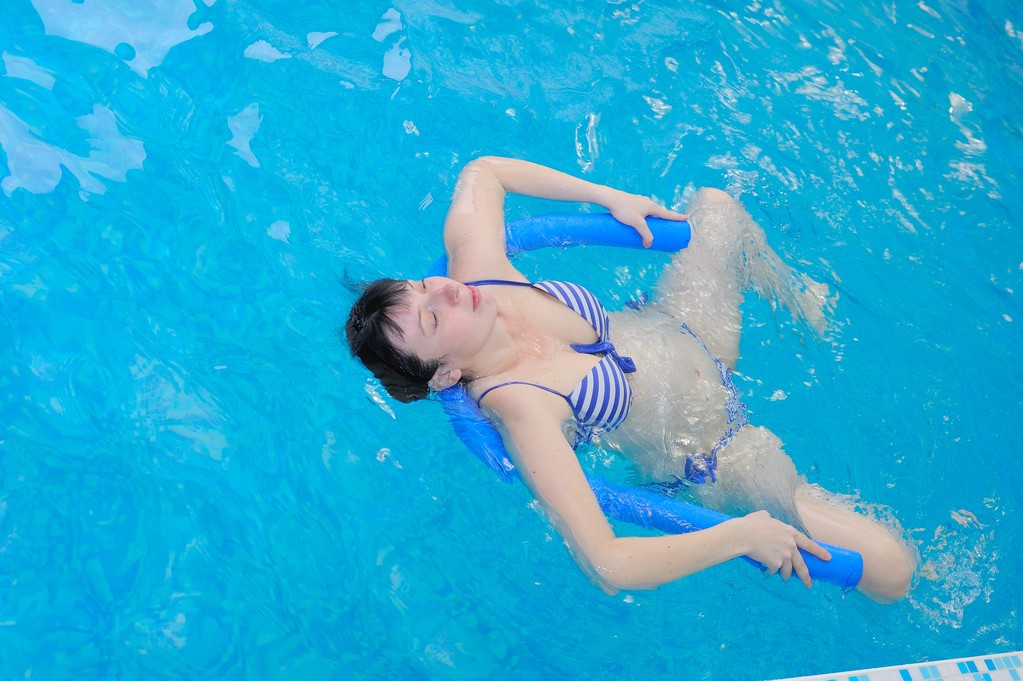Discover the potential benefits of water exercises for alleviating third-trimester back pain.
Can Water Exercises Alleviate Third-Trimester Back Pain?
If you’re currently in your third trimester of pregnancy, you might be familiar with the discomfort and pain that can come with it, especially in your back. But fear not, there’s a refreshing solution you may not have considered: water exercises! Yes, you read that right. Taking a dip and getting active in the water can potentially alleviate that pesky back pain. Intrigued? Let’s dive in and understand how this aquatic workout can be your ticket to relief.

Understanding Third-Trimester Back Pain
Before we jump in the pool, it’s essential to understand the ins and outs of third-trimester back pain. The physical demands of pregnancy, combined with the additional weight of your precious baby bump, can put strain on your back. But what exactly causes all this discomfort?
During the third trimester of pregnancy, many women experience back pain due to various factors. These factors include the growth of the baby, changes in the center of gravity, hormonal changes, ligament laxity, and the expansion of the uterus. All of these factors combined create a perfect storm of discomfort for expectant mothers.
Causes of Back Pain in the Third Trimester
There are several culprits behind third-trimester back pain. As your baby grows, your center of gravity shifts forward, which can lead to an imbalance and put extra stress on your back muscles. This shift in balance can cause strain and discomfort in the lower back. Additionally, hormonal changes during pregnancy can cause ligaments to become more relaxed, leading to increased pressure on the back muscles.
Furthermore, the expansion of your uterus can put pressure on the nerves in your lower back, causing pain or sciatica. The sciatic nerve, which runs from the lower back down to the legs, can become compressed or irritated due to the growing uterus. This compression can result in sharp or shooting pain that radiates down the back of the leg.
It’s important to note that every woman’s experience with back pain during pregnancy is unique. Some may experience mild discomfort, while others may have more severe pain. It’s essential to listen to your body and seek appropriate medical advice if the pain becomes unbearable or affects your daily activities.
The Impact of Back Pain on Pregnancy
The discomfort caused by back pain can be more than just a nuisance—it can affect your overall well-being during pregnancy. Sleep disturbances are common among pregnant women, and back pain can exacerbate this issue. The inability to find a comfortable sleeping position due to back pain can lead to restless nights and fatigue.
Additionally, back pain can limit mobility and make it challenging to perform daily activities. Simple tasks such as bending over, walking, or standing for extended periods may become painful and uncomfortable. This limitation can impact your quality of life and make it difficult to enjoy the later stages of pregnancy.
Furthermore, the constant presence of back pain can take a toll on your mental health. Pregnancy is already a time of significant physical and emotional changes, and dealing with chronic pain can add an extra layer of stress and frustration. It’s crucial to find effective methods to alleviate the pain and prioritize self-care during this time.
In conclusion, third-trimester back pain is a common experience for many pregnant women. Understanding the causes and impact of this discomfort can help you navigate this stage of pregnancy with more ease. Remember to consult with your healthcare provider for personalized advice and guidance on managing back pain during pregnancy.
The Science Behind Water Exercises
Now, let’s take a closer look at the science behind water exercises and how they can come to your rescue. Water-based activities, also known as aquatic therapy, harness the power of water resistance and buoyancy to provide a low-impact yet effective workout for your body.
When you step into the water, you are entering a unique environment that offers numerous benefits for your physical well-being. Aquatic therapy involves exercising in a pool or shallow water, making use of the water’s properties. The buoyancy of water helps support your body weight, reducing the strain on your joints and muscles. This is particularly beneficial for individuals with conditions such as arthritis or back pain, as it allows them to engage in physical activity without exacerbating their symptoms.
In addition to buoyancy, water resistance plays a crucial role in water exercises. The resistance created by the water provides a gentle yet challenging workout for your muscles. As you move through the water, your muscles have to work harder to overcome the resistance, which helps to improve strength and endurance. This is especially beneficial for individuals recovering from injuries or those looking for a low-impact workout option.
The Principles of Aquatic Therapy
Aquatic therapy is based on the principles of hydrodynamics and the properties of water. By understanding these principles, therapists and fitness professionals can design effective water exercise programs tailored to individual needs.
Hydrodynamics is the study of how fluids, such as water, behave when in motion. When you move in water, you experience hydrodynamic forces that act on your body. These forces include drag, lift, and buoyancy. By manipulating these forces, therapists can create specific exercises that target different muscle groups and provide varying levels of resistance.
One of the key principles of aquatic therapy is the use of buoyancy. The upward force exerted by water counteracts the downward force of gravity, resulting in a reduced weight-bearing load on your body. This is particularly beneficial for individuals with joint pain or limited mobility, as it allows them to perform exercises with less stress on their joints. The buoyancy of water also helps to improve balance and stability, as it provides a supportive environment for practicing movements and maintaining proper body alignment.
Benefits of Water Resistance and Buoyancy
The beauty of water exercises lies in the unique benefits they offer. The water’s buoyancy not only relieves the weight-bearing pressure on your back but also promotes better blood circulation and reduces swelling. When you immerse yourself in water, the hydrostatic pressure exerted by the water helps to improve blood flow, which can be especially beneficial for individuals with circulatory issues or edema.
Furthermore, the gentle resistance provided by water helps to improve muscle tone, flexibility, and posture. As you move against the resistance of the water, your muscles are engaged in a full-body workout. This helps to strengthen and tone your muscles without putting excessive pressure on your back or joints. Water exercises also promote flexibility, as the water’s resistance allows for a wider range of motion compared to exercises performed on land.
Additionally, water exercises can have a positive impact on your posture. The buoyancy of water helps to support your body in an upright position, encouraging proper alignment of the spine and reducing the risk of postural imbalances. This can be particularly beneficial for individuals who spend long hours sitting or have jobs that require repetitive movements.
It’s like getting a soothing massage while working out—talk about a win-win situation! The combination of water resistance, buoyancy, and the therapeutic properties of water make aquatic therapy a highly effective and enjoyable form of exercise. Whether you’re recovering from an injury, managing a chronic condition, or simply looking for a refreshing workout option, water exercises can provide numerous benefits for your overall health and well-being.
Water Exercises for Back Pain Relief
Now that we understand the science behind it, let’s dive into the actual water exercises that can provide some much-needed relief for your aching back.
Suitable Water Exercises for Pregnant Women
There are several safe and effective water exercises specifically designed for pregnant women. These include gentle stretches, water walking or jogging, leg swings, and side kicks. The key is to listen to your body, start slowly, and gradually increase the intensity as you feel comfortable. Remember, the goal is to alleviate the pain and not to overexert yourself.
Safety Measures During Water Exercises
Prioritizing safety is a must when engaging in water exercises during pregnancy. First and foremost, consult with your healthcare provider before starting any new exercise routine. Additionally, ensure that the water temperature is appropriate, the pool environment is clean and sanitary, and you have a supportive and non-slippery surface to perform the exercises. And of course, stay hydrated and take breaks as needed. Safety first, mama!
The Effectiveness of Water Exercises for Back Pain
Now that we’ve taken a dip into the science and exercises, let’s dive into the question you’ve been waiting for: just how effective are water exercises for alleviating back pain during the third trimester?
Research on Water Exercises and Back Pain
There is promising research that highlights the effectiveness of water exercises for relieving back pain during pregnancy. A study published in the Journal of Physical Therapy Science found that aquatic exercises significantly reduced pain intensity and improved functional ability in pregnant women with back pain. Another study published in the International Journal of Obstetrics and Gynecology discovered that water aerobics had a positive impact on the quality of life and overall well-being of pregnant women.
How Quickly Can Relief Be Expected?
While the exact timeframe for relief may vary from person to person, many women report experiencing relief from back pain almost immediately after engaging in water exercises. The combination of the water’s therapeutic properties, gentle movements, and improved blood circulation can work wonders for alleviating discomfort. It’s like taking a mini vacation for your back!
Other Methods to Alleviate Third-Trimester Back Pain
As they say, variety is the spice of life—or in this case, the key to relieving back pain during pregnancy. While water exercises can be a game-changer, it’s always good to have a backup plan. Here are a couple of other methods you can explore:

Physical Therapy for Pregnant Women
Consider seeking the expertise of a physical therapist who specializes in prenatal care. They can provide personalized exercises and techniques to address your specific back pain concerns. From targeted stretches to manual therapy, physical therapy can complement your water exercises and provide additional relief.
Safe Medications and Natural Remedies
It’s essential to consult with your healthcare provider before trying any medications or natural remedies during pregnancy. They can guide you on safe options that can potentially alleviate your back pain. From over-the-counter pain relievers (if deemed safe) to warm or cold compresses and prenatal massages, there are various methods that may offer temporary relief.
So, mama-to-be, if you’re looking to bid farewell to your third-trimester back pain, why not make a splash with water exercises? Dive into the soothing world of aquatic therapy, let the water relieve the stress on your back, and enjoy the refreshing workout. With its numerous benefits and research-backed effectiveness, water exercises might just be the key to making your pregnancy journey a more comfortable and enjoyable one. Take the plunge, and let those backaches swim away!



